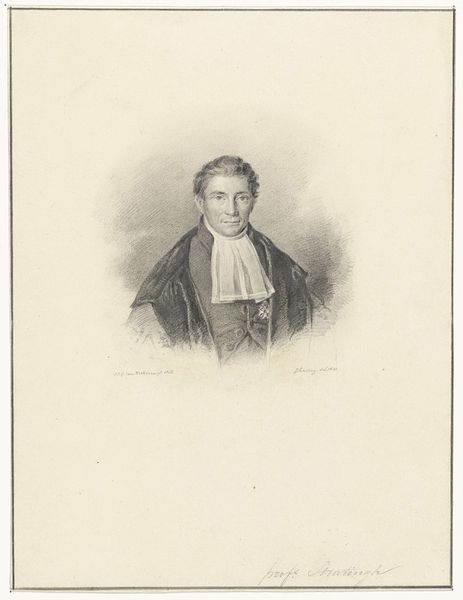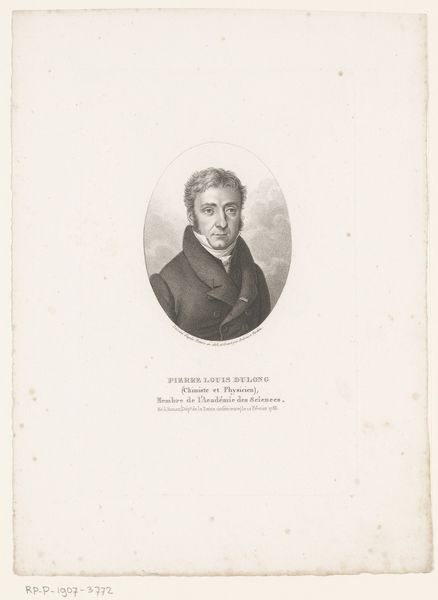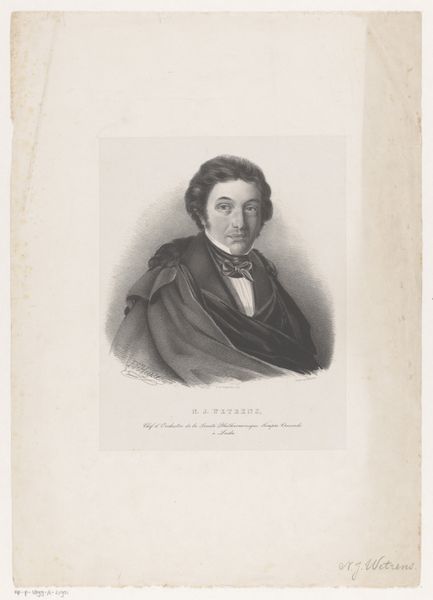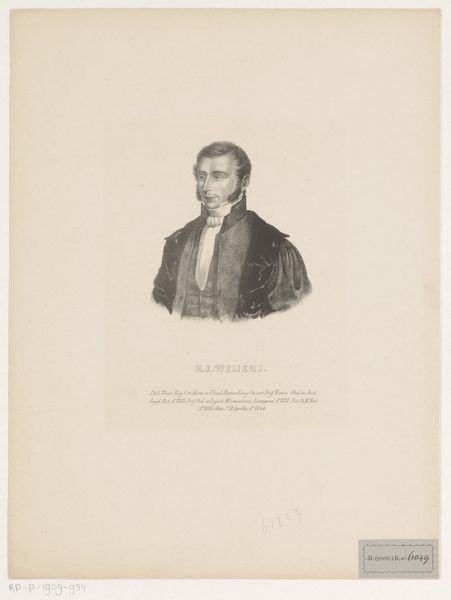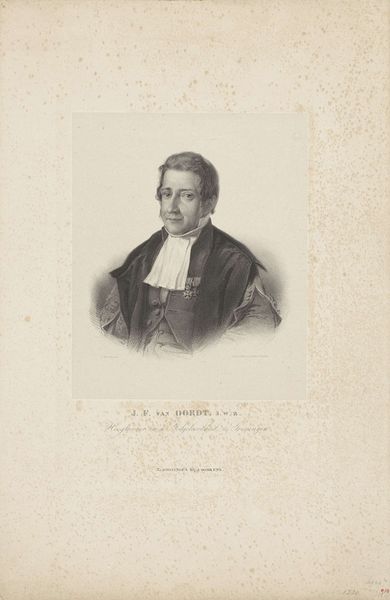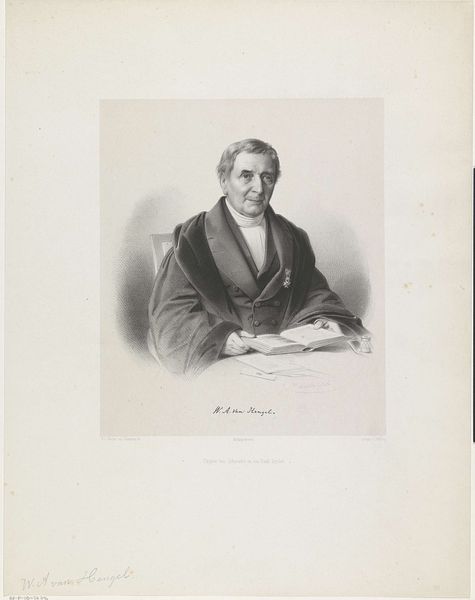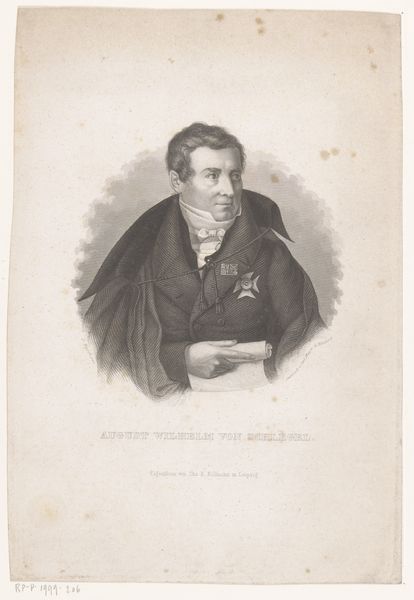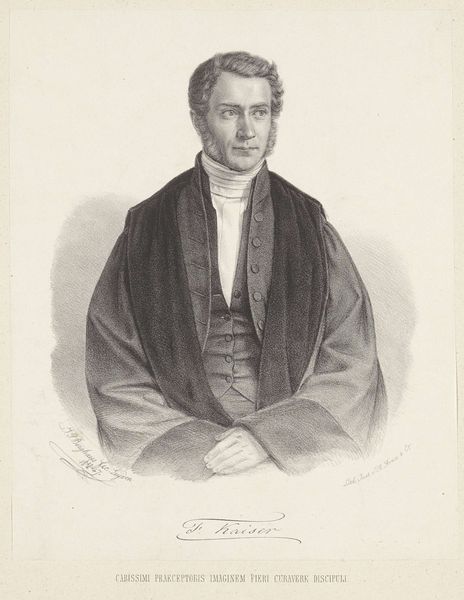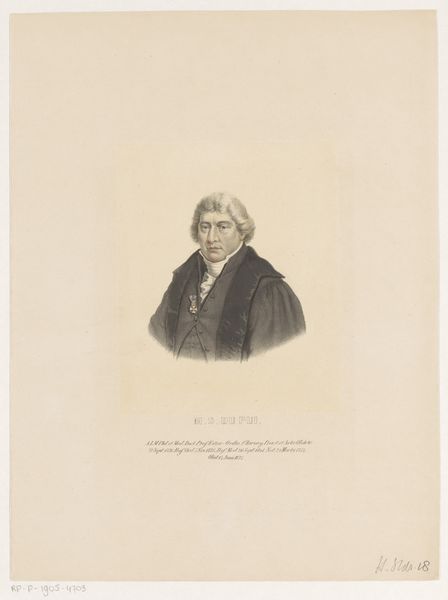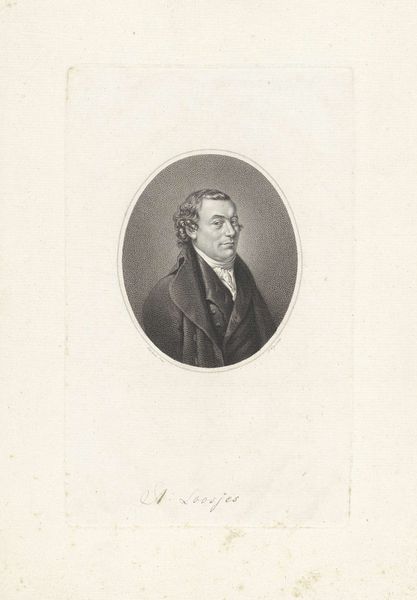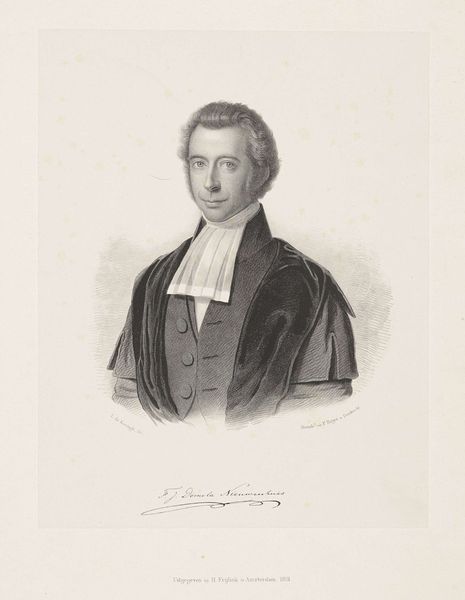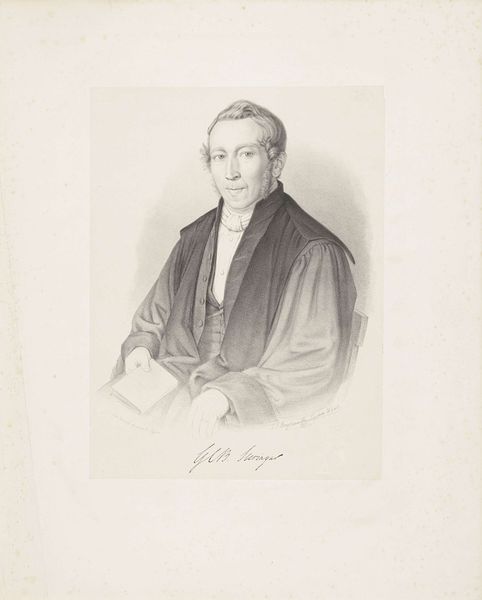
print, engraving
#
portrait
# print
#
engraving
#
realism
Dimensions: height 495 mm, width 355 mm
Copyright: Rijks Museum: Open Domain
Curator: Welcome to the Rijksmuseum. Before us, we have an engraved portrait dating to the period of 1829-1891. The sitter is P. Hofstede de Groot. Editor: My first impression is how much detail the artist achieved in the face. It gives off a very academic and slightly severe atmosphere, maybe reflective of the social status of the time. Curator: It’s true that portraiture was very much shaped by social and institutional power during this period. The piece reflects the sitter’s status through realistic representation but it also performs a specific function within a network of institutions, galleries, and public life. What can you tell me more about the sitter? Editor: P. Hofstede de Groot was a professor of theology in Groningen, so he occupied quite an interesting intersection of faith, knowledge, and power. These men and the institutions they headed shaped the society of their time. Do you see anything particularly revealing? Curator: The engraving itself is a traditional medium, offering wide circulation. This fact implies an intention for broad recognition of the sitter's place in society. Realism in art like this validated societal norms. And look, notice how his attire is quite modest. The robes serve not to celebrate the individual, but to make public a claim on institutions. Editor: I find myself wondering about the communities he represents, though. The details hint at underlying social dynamics regarding privilege and exclusion, wouldn’t you agree? Who did engravings like this serve? It clearly wasn’t the working class. Curator: That's an excellent point. Access to imagery and representation were limited by both cost and literacy. Realism, when detached from critical context, can unintentionally reinforce social divisions. In that case, did such portraits cement a person's reputation in broader Dutch society? Absolutely, but on whose terms? Editor: This makes me consider how, even today, the institutions represented and upheld by people like P. Hofstede de Groot continue to inform contemporary structures of inequality. It calls for a thorough questioning of not only history but the ways we keep seeing and interpreting that history. Curator: Absolutely. We need art to encourage thoughtful assessment of societal forces and the legacy of power, so we avoid replicating structures of past inequities. Editor: Indeed. I am left considering the ongoing need to decolonize these traditional narratives through engagement and intervention. Curator: Food for thought indeed, and thank you for your valuable insight.
Comments
No comments
Be the first to comment and join the conversation on the ultimate creative platform.
